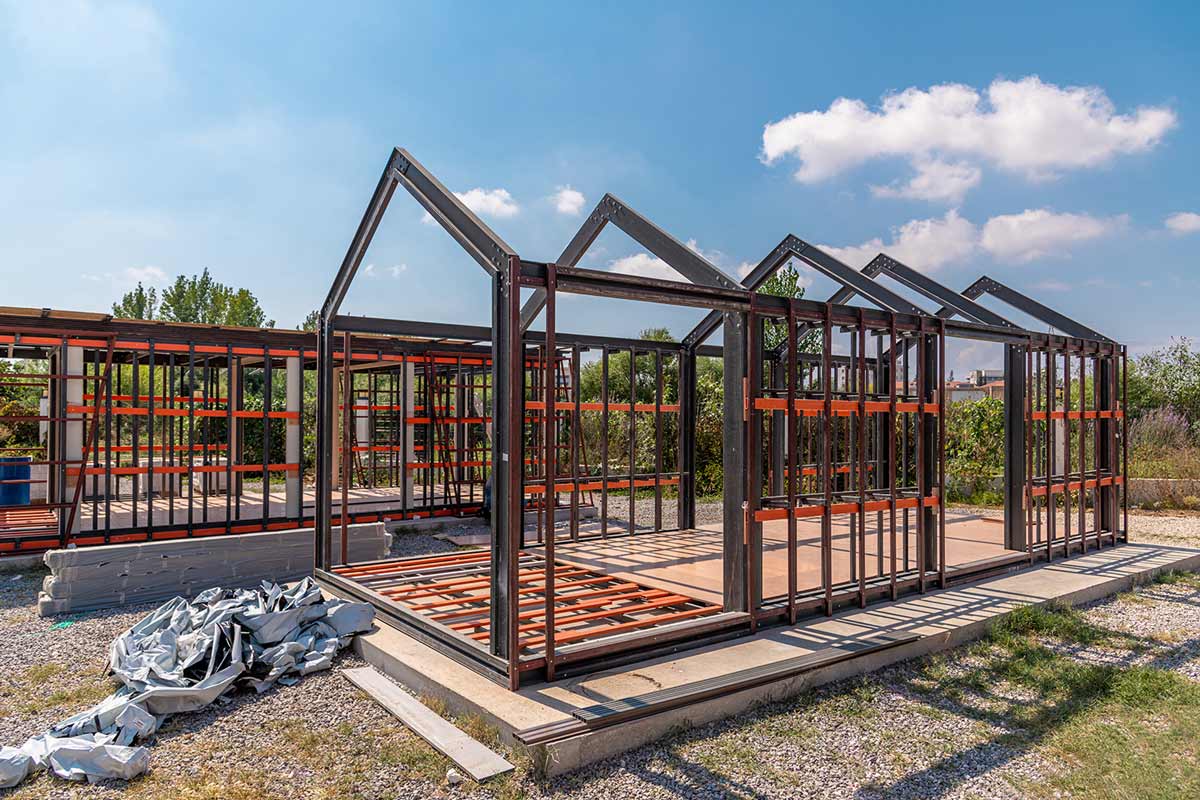
Best Practices for Adding a Foundation for a Tiny House or Mother-in-Law House
Building a tiny house or mother-in-law suite is an exciting project, but it involves more than just choosing the right layout or the perfect color scheme. A solid foundation is a critical part of the process, as it ensures the safety and longevity of the structure, regardless of its size. So, before hammering nails or painting walls, consider some vital factors.
Assessing the ground conditions is paramount. The soil type, slope, and level of compaction play crucial roles in determining the land’s suitability for construction and the best type of foundation. This step ensures the ground can bear the weight of your new addition without shifting or settling.
Different foundations suit different terrain, climate conditions, and personal preferences. Whether you choose a slab-on-grade, pier, crawlspace, or full basement foundation, this selection plays a vital role in the stability and durability of your new tiny house or suite.
Lastly, the quality of materials and their accurate installation can significantly enhance the lifespan of the foundation. Using industry-standard materials and ensuring meticulous installation leads to a foundation that stands the test of time.
Evaluating Ground Conditions
Building a strong foundation starts with a thorough evaluation of the ground. This involves a detailed analysis of the soil’s composition, the land’s slope, and the soil’s level of compaction.
Understanding Soil Type
Identifying the soil type is a critical part of evaluating ground conditions. Different soils, from clay to sandy, have unique properties that can impact the foundation’s stability. For example, clay soil can expand and shrink depending on moisture levels, potentially damaging the foundation. Sandy soil, while good at draining water and maintaining its volume, tends to shift. A comprehensive soil test reveals the soil type on the property and its behavior under varying conditions, which is crucial in designing a resilient foundation.
Considering Slope and Soil Compaction
The land’s slope and the soil’s compaction level are also important. Sloping land can lead to water runoff that might weaken the foundation, while level ground ensures appropriate drainage away from the structure. Thus, it’s essential to evaluate the land’s gradient and design accordingly. A slight slope can aid drainage, but a steep one may necessitate extra construction measures.
Soil compaction is another key factor. The soil needs to be compact enough to bear the structure’s weight yet porous enough to allow proper drainage. A soil compaction test can offer valuable insights into the soil’s load-bearing capacity. If the soil is too loose, compaction may be required to increase its strength. Conversely, if it’s too compact, loosening may be needed to enhance drainage.
In conclusion, evaluating ground conditions is an essential, not an optional step. The type of soil, slope, and compaction level all contribute to determining the most suitable foundation type for any structure, from tiny houses to larger buildings. A strong foundation relies on a thorough understanding of the ground conditions.
Selecting the Right Foundation Type
The choice of foundation for your structure relies on several factors such as terrain, climate, and personal preference. Each foundation type has unique characteristics, which are crucial to understand when making the best selection for your needs.
Slab-on-Grade Foundations
A slab-on-grade foundation is a single layer of concrete poured onto the ground. This cost-effective option works well in areas with stable soil conditions and is ideal for small homes. It provides a firm base without extensive excavation, but it lacks protection against ground moisture and pests.
Pier Foundations
Pier foundations use concrete pillars or posts driven into the ground to support the structure. They are excellent for uneven terrains or areas with poor soil conditions. They offer better ventilation and flood protection but can be more challenging and costly to install than slab-on-grade foundations.
Other types of foundations include:
- Crawl Space Foundations: This foundation type creates a gap between the ground and the structure, providing a ‘crawl’ space. It offers better insulation, space for utilities, and protection against ground moisture, but it can be susceptible to mold and pest issues without proper maintenance.
- Full Basement Foundations: Full basement foundations are extensive and costly. They provide additional living or storage space and excellent protection against severe weather. However, they require significant excavation and may not be feasible or necessary for small homes.
Each foundation has its advantages and disadvantages, and the choice depends on your specific needs and circumstances. For example, consider a crawl space or basement foundation in a cold climate to protect your home from the frost line. Conversely, a slab-on-grade foundation may be the most cost-effective and practical solution for a flat, stable piece of land.
Choosing the right foundation isn’t merely about the cheapest or easiest option. It’s about finding the one that can support your home over time. Take the time to evaluate your options and make an informed decision that aligns with your home-building goals.
Quality Materials and Installation for a Durable Foundation
Building a strong and resilient
foundation for your tiny house
or mother-in-law suite involves more than just selecting the right type. It requires the use of top-notch materials and precise installation techniques. Let’s discuss the importance of these two factors.The Importance of Quality Materials
Investing in high-quality materials is crucial for creating a durable foundation. While cheaper materials might be tempting, they can compromise the structure’s longevity, leading to costly repairs or replacements down the line. High compressive strength concrete, for instance, is less likely to crack and effectively resists the pressure exerted by the building above.
Reinforcements like steel bars, or rebar, are frequently used due to their high tensile strength and flexibility. These properties allow them to resist tension forces that can cause concrete to crack or buckle. Using correctly sized and spaced rebars is vital for optimal support and load distribution across the foundation.
The Value of Precise Installation
Even the best materials can’t save a poorly installed foundation. Ensuring that the concrete is properly mixed and poured is crucial to avoid inconsistencies and air pockets, which can create weak spots. The concrete should be spread evenly and vibrated to release trapped air, enhancing its density and strength.
Correct alignment and leveling of the foundation is another crucial detail. An uneven foundation can lead to an unstable structure and potential structural damage. Tools like laser levels and spirit levels can help ensure precision. Letting the concrete cure for the recommended time is also necessary to achieve maximum strength.
Complying With Building Codes and Standards
Adhering to local building codes and construction standards isn’t just about legal compliance; it’s about ensuring a reliable and safe foundation. The rules stipulate certain details, such as the base’s minimum depth, the kind and positioning of reinforcements, and the benchmark for the concrete blend. By following these rules, you can ensure that your foundation can support the weight of the structure and withstand external factors like ground movement and weather conditions.
Meeting these standards might seem challenging, but it’s crucial for the integrity and lifespan of your tiny house or suite. Building isn’t just about speed and cost; but about creating a solid, safe, and enduring home.
Conclusion/call to action
Understanding your ground conditions is crucial when choosing the right type of foundation. In our work at JM Concrete Pros, we hold strongly to using high-quality materials and best installation practices to ensure you have a sturdy, reliable base for your tiny house or mother-in-law suite. Our purpose is to transform your ambitions into actual accomplishments. Don’t let your project sit unattended; begin the journey towards building a solid and safe home. Get in touch with Jordy for a free, no-obligation quote on concrete + hardscaping services.
